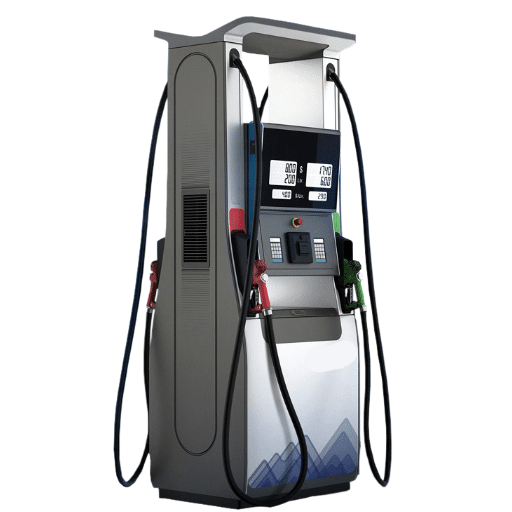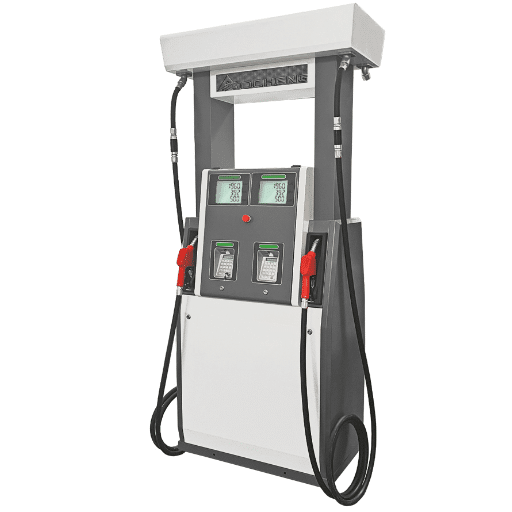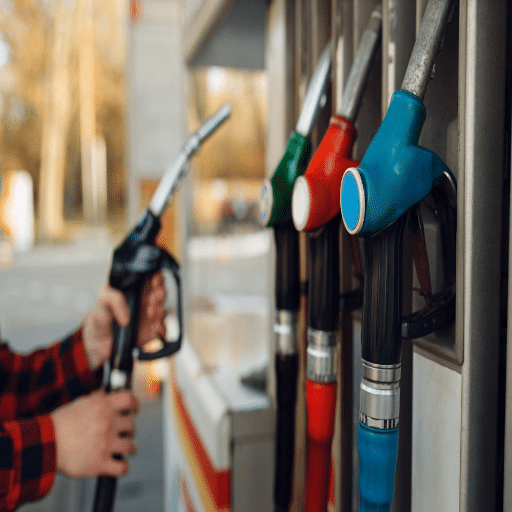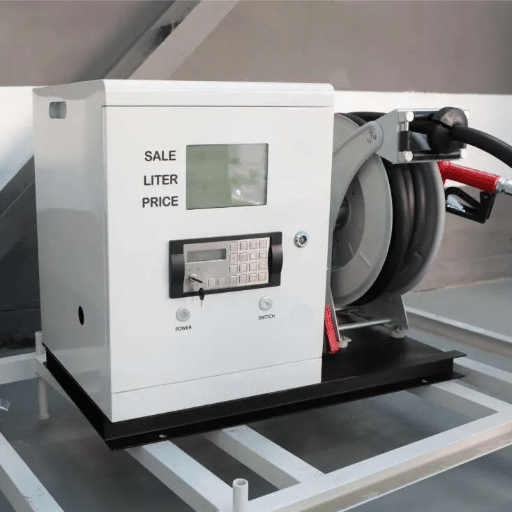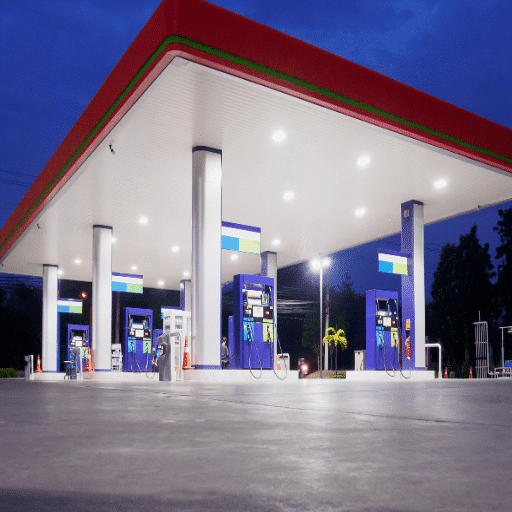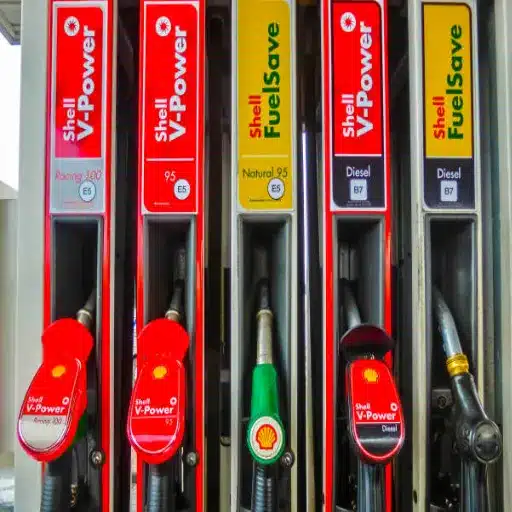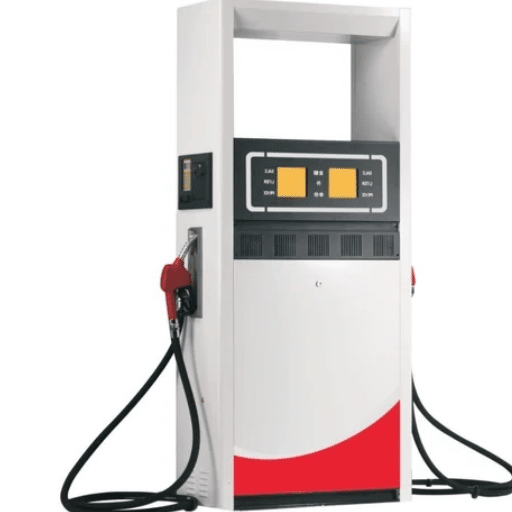Fuel dispensers are a vital part of everyday life, playing a crucial role in the smooth refueling of vehicles at any gas station. But have you ever pondered what happens behind these machines? Getting to know the key components of a fuel dispenser can strip away the mystique and offer insight into its operational capabilities, durability, and technology. This blog will take you through the main parts of a fuel dispenser, all while detailing the roles of each cast member in concert with one another to dispense fuel correctly and reliably on demand. Whether you are an industry player, simply an inquisitive consumer, or just curious about how things work, here lies a touch of interest for you. Buckle up-will do, for now!
Introduction to Fuel Dispenser Parts
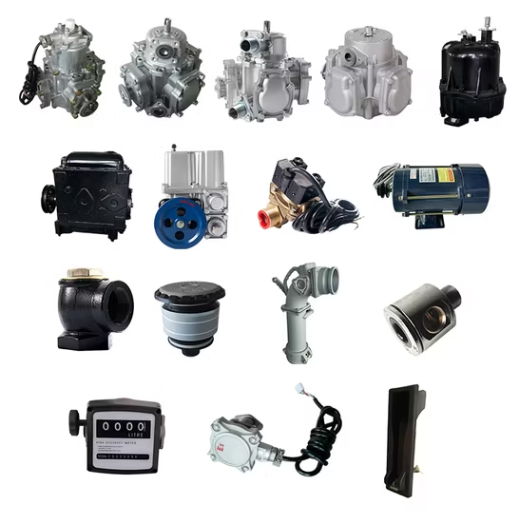
This list will outline some of the major components that constitute a fuel dispenser, all working together in coordination for smooth and accurate fuel dispensing: the pump, which moves fuel from the storage tank into the nozzle; the meter, which measures the dispensed amount; and the nozzle, which channels the fuel into the vehicle tank. Serious consideration is also given to a control system that manages the dispenser’s operation to ensure accuracy and safety. They are proficiently designed for the docking of these parts themselves, with little chance of any unglued process between them resulting in a bad refueling experience!
What is a Fuel Dispenser?
A fuel dispenser is an apparatus in a filling station that dispenses fuel into vehicles. It offers methods for measuring a certain amount of fuel to deliver it safely and efficiently. The fuel dispenser nowadays utilizes the latest meters, pumps, nozzles, and control systems to ensure that, with refueling, precision and reliability are achieved. Typically, a payment system is integrated into the system for customers at the gas stations to provide a seamless experience during refueling and payment.
Importance of Fuel Dispenser Parts
Fuel dispensers are indispensable to transportation and energy supply systems worldwide, and therefore, component reliability is of great importance. The pump, flow meter, nozzle, and control system ensure the delivery of fuel with precision, safety, and minimal wastage, all while ensuring that fuel dispensing is carried out in the most courteous manner. Modern fuel dispensers typically feature positive displacement meters with an accuracy of up to ±0.25%, thereby minimizing errors that could result in substantial monetary losses in high-volume operations.
30% reduction in maintenance costs • Real-time monitoring • Improved safety
A growing trend is now being experienced in developing and installing IoT or Internet of Things-based systems in fuel dispensers. Bright dispensers with sensors and real-time monitoring capability allow station operators to service equipment faults, monitor fuel levels, and prevent leakage, hence contributing to safety and convenience. Statistics show that for the maintenance of existing systems, there is a reduction of approximately 30% when IoT-enabled systems are implemented, and clients identify problems before any major failure occurs. Additionally, the design of fuel dispensers can be improved to make the world greener, even allowing for vapor recovery systems that reduce emissions of hazardous gases during refueling.
Each part of a fuel dispenser is made for heavy use and adheres to international standards for safety and accuracy. For stations to be considered worthy by their clientele and to abide by regulations, only high-grade components are acceptable, and indeed, they have been doing so in every respect in the energy and automotive fields today.
Overview of the Main Parts of the Fuel Dispenser
Fuel dispensers are complex systems with various components whose proper functioning enables the accurate, safe, and effective transfer of fuel. Given below is a dissected view of the main components and their functions:
1. Hydraulic System
The hydraulic system remains at the heart of any fuel dispenser. This system consists of a pump, meter, and piping set. Fuel is drawn through the underground storage tanks by the pump, while the meter determines the amount dispensed. Meters nowadays chiefly use turbine or piston technology and provide results with an accuracy of at least 0.3%, meeting strict industry standards.
2. Electronics Control System
These electronic components control various functions, from pricing, transaction information, and transmission to the fuel station’s system. Utilizing microprocessor-controlled circuitry, these systems ensure the precise calculation of total cost and volume delivered. They also facilitate compatibility with payment systems such as RFID or mobile payments, thus offering increased convenience for the customer.
3. Nozzle and Hose Assembly
The nozzle and hose assembly facilitates the finished delivery in a controlled manner. The nozzles feature safety devices, including an automatic shut-off system, to prevent spillage in the event of overflow. The hoses are made from reinforced, rubberized materials that can withstand high-pressure use and resist cracking or wear when exposed to fuels for longer durations.
4. Vapor Recovery System
Serving as an essential factor in reducing environmental impacts, the vapor recovery system captures vapors generated during refueling that would otherwise escape into the atmosphere. They can minimize hydrocarbon emissions by up to 98% and play a significant role in achieving environmental sustainability and meeting air quality norms.
5. Display and User Interface
A modern dispenser is equipped with digital displays that provide precise and real-time information about the price per gallon, total price, or volume dispensed to the consumer. Some machines also have touch-screen interfaces and multimedia functions, enabling the station to play promotional messages or entertainment to customers during fueling.
6. Security Features
With the rise in digital payment options, the payment module in the dispenser has to be compliant with the PCI DSS (Payment Card Industry Data Security Standards). To ensure the protection of data related to transactions, the system must instill complete confidence in customers to prevent any fraudulent activities.
7. Housing and Structural Frame
The external housing of a fuel dispenser protects internal components. Usually, it is constructed from stainless steel or an aluminum alloy, crafted to resist corrosion and withstand severe weather, ensuring it remains usable even in harsh operational environments.
Modern fuel dispensers are increasingly incorporating intelligent features such as IoT technology for remote monitoring, predictive maintenance, and improved operational efficiencies. These new developments have transformed fueling systems into more innovative and reliable tools that can consistently deliver performance and sustainability.
Key Components of Fuel Dispensers
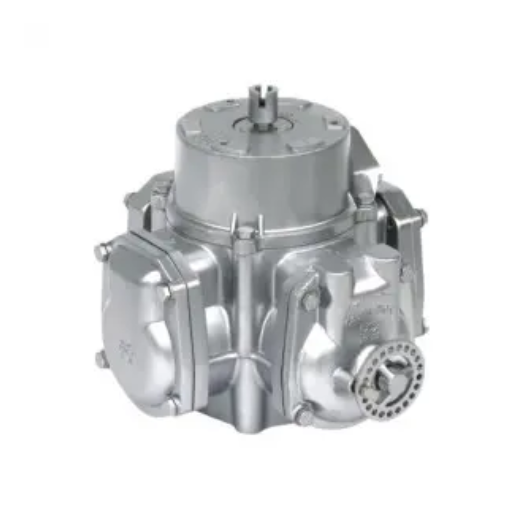
| Component | Function | Key Features |
|---|---|---|
| Pump | Draws fuel from storage tank and delivers to nozzle | Regulated flow rate, leak detection |
| Flow Meter | Ensures accurate fuel measurement | ±0.25% accuracy, digital readouts |
| Hoses and Nozzle | Safe fuel delivery to vehicle tank | Automatic shut-off, ergonomic design |
| Display Unit | Shows real-time transaction information | Digital displays, touch-screen interface |
| Control System | Manages dispenser operations and safety | Electronic controls, safety features |
| Filtration System | Removes contaminants before dispensing | Multi-stage filtering, regular replacement |
| IoT Modules | Remote monitoring and diagnostics | Real-time data, predictive maintenance |
These parts are instrumental to ensure successful, efficient, and safe fueling.
Detailed Component Analysis
Fuel Pump: The Heart of the Dispenser
Essentially, the fuel pump enables the dispenser to draw fuel from the storage tank and dispense it through the nozzle. The pump operates either through a suction system or as a submersible system. Suction pumps are typically used with above-ground tanks and rely on vacuum pressure to draw fuel out of the tank. In contrast, submersible pumps are located inside the tank and use electric motors to force fuel through the system.
Modern fuel pumps have evolved to maintain steady flow rates while keeping volume measurement precise, thereby avoiding loss or over-dispensing. Advanced systems utilize various sensors and controls to detect leaks, regulate pressure, and ensure safety during operation. They are also designed and tested to be integrated with the filtration system, along with IoT modules, to ensure that clean fuel is produced, and a real-time monitor can boost efficiency and safety. It works in conjunction with other elements to make the fuel pump the primary component inside the dispenser.
Fuel Nozzle: Dispensing with Precision
The fuel nozzle is vital in assuring the accurate and efficient dispensing of fuel. Thus, it is a high-tech component designed to prevent spills, overflows, and vapor emissions, making a significant contribution to environmental protection and operational efficiency. The new generation Fuel Nozzles feature several advanced capabilities, including an automatic shut-off system that ceases fuel dispensing once the tank is full, as well as pressure-sensitive triggers that facilitate precise control of the fuel flow. The advantage is that most nozzles come with a vapor recovery system that captures fuel vapors, which are then recycled to minimize wastage and reduce emissions. Besides, considering ergonomic designs and materials of construction that can withstand repeated use, the fuel nozzle is manufactured to stay accurate and reliable, therefore making it a must in the refueling process.
Flow Meter: Measuring Fuel Accurately
Flow meters are essential for obtaining an exact measurement of fuel during dispensing. There exists a flow meter that determines the volume of fuel that goes through it; it can use a turbine principle, positive displacement, or even the ultrasonic principle. All modern flow meters offer greater precision and reliability, reducing instances of erroneous fuel delivery and, therefore, ensuring that customers receive what they pay for. They come with digital readouts and automated systems for ease of use and efficiency. Flow meters maintain transparency in fuel transactions by staying calibrated to metrological standards, thereby supporting regulatory compliance.
Additional Parts of the Fuel Dispenser
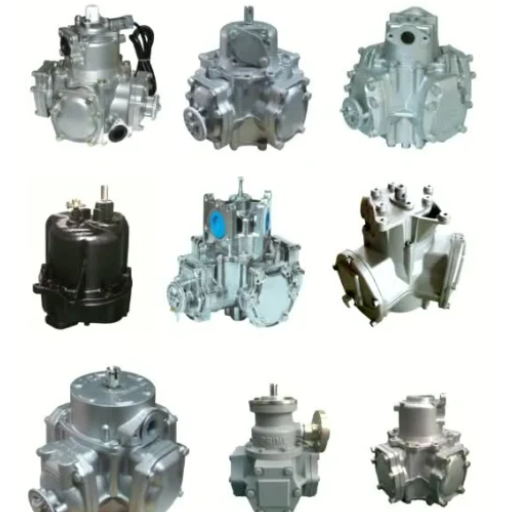
- Fuel Hose with Nozzle: These hoses deliver fuel from the pump dispenser to the vehicle’s filling cover. The nozzle features an automatic shut-off to prevent overfilling.
- Pump: Storage tanks holding the fuel dispense fuel to the vehicle by gravity or pumps; modern pumps are built for longevity and uniform performance.
- Metering System: The metering system maintains an exact count of the fuel gallons charged to the customer, ensuring fair transactions with no miscalculations.
- Display: The screen display shows information relevant to the hiring process, like quantities of fuel, price, and cost, for easy monitoring by the user.
- Keypad or touchpad: The interface gives its users the privilege to select fuel type, enter payment information, or select a few other options that the dispenser may provide.
Together, these components make up an uninterrupted and user-friendly customer refueling experience.
Hose: Connecting the Nozzle to the Pump
The hose connecting the pump to a fuel nozzle is the essential connection that allows fuel to be dispensed into vehicles. Usually made from rigid and flexible materials, such as reinforced rubber or composite plastics, the hose is constructed to withstand high pressures as well as adverse environmental conditions. Several safety features may be incorporated into the hose design, such as breakaway couplings, which separate the hose in the event of excessive tension to prevent leaks or damage. Proper maintenance of the hose guarantees smooth fuel flow, safety, and the long life of the equipment.
Valves: Controlling Fuel Flow
Valves during fuel transfer operations play a crucial role in controlling the flow of fuel within the system. This valve controls the fuel movement, pressure, and direction, ensuring a high level of efficiency and safety is attained. The types of valves commonly used in fuel systems include ball valves, check valves, and pressure relief valves. Ball valves provide smooth and positive control through a spherical member that rotates within the valve; check valves maintain the integrity of the fuel flow by preventing a reverse flow. Pressure relief valves protect systems by diverting excess pressure, thereby limiting the possibility of damage or accident. In combining strength with hydraulic and mechanical engineering, valves have become indispensable in smooth and reliable fuel transfer operations. Regular inspection and maintenance of valves enhances their longevity and maximizes their performance.
Filters: Ensuring Clean Fuel Delivery
Filters act as a safeguard for fuel purity during the transfer and use phases. They are designed to trap contaminants such as dirt, rust, water, and microbial growth that can affect operating efficiency and lead to equipment damage. Today’s fuel filters utilize sophisticated materials and staged filtering systems to ensure the highest level of maintenance under extreme conditions. It is essential to change filters regularly to prevent clogging, maintain optimal fuel flow, and prolong the life of your machinery. By ensuring clean fuel, filters enable engine protection, reduce maintenance costs, and improve operational reliability.
Technology and Sensors in Fuel Dispensers
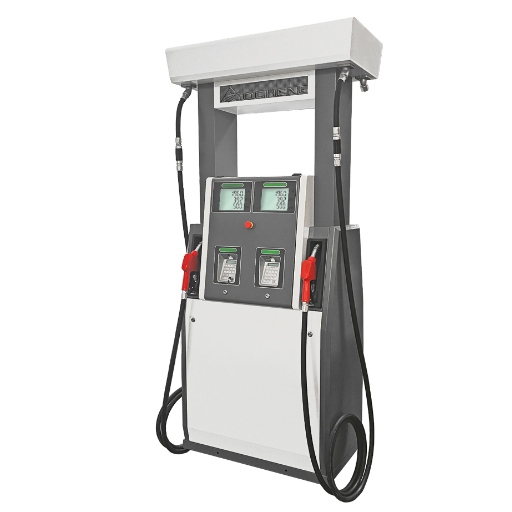
Modern fuel dispensers are equipped with technologies and sensors to guarantee accuracy, efficient transactions, and safety. The flow sensors measure the volume of fuel dispensed to ensure that there are no discrepancies during transactions. Then, temperature sensors are used to compensate for any temperature variations so that fuel density remains constant. Furthermore, leak detection systems serve to check any leakage, thus promoting safety and environmental compliance. Operational reliability is enhanced by these measures, even though they reduce errors and present the user with a smooth experience.
Role of Sensors in Monitoring Performance
Sensors play a crucial role in monitoring and optimizing performance across all aspects of life. By collecting data in real-time, they enable the evaluation and management of complex systems with a high degree of accuracy. Vibration sensors in industrial manufacturing detect abnormal behavior caused by machinery, predicting and attempting to mitigate failure. Studies developed over the last few years confirm that predictive maintenance, achieved through sensor data analysis, can reduce equipment downtime by up to 50% and result in approximately a 30% decrease in maintenance costs.
Key Benefits of Sensor Technology:
- Industrial Manufacturing: 50% reduction in equipment downtime, 30% decrease in maintenance costs
- Environmental Monitoring: Real-time air quality measurement and pollution tracking
- Agriculture: 20-30% water savings through precision irrigation
- Automotive Safety: 27% reduction in crashes through ADAS systems
Environmental monitoring, on the other hand, has also flourished with air quality sensors measuring particulate matter, CO2, and other pollutants. With these data, applications affecting public health can be developed, or the implementation of environmental standards can be verified. Similarly, in agriculture, soil moisture sensors help verify irrigation systems, allowing for water savings of 20-30% through precision farming.
This sensor technology is being implemented in the automotive sector to enhance vehicle performance and safety. ADAS systems, for instance, utilize ultrasonic, radar, and LiDAR sensors to detect obstacles and prevent accidents. Recent research reveals that these systems can reduce the number of crashes by 27%.
Generally, the importance of sensors lies in enabling performance monitoring for increased efficiency, safety, and informed decision-making in an increasingly data-driven environment. With their continuous evolution, these technologies can disrupt industries and steer sustainable development.
Advanced Features in Modern Fuel Dispensers
Modern fuel dispensers incorporate modern features, enhancing operational efficiency while providing convenience and safety for both customers and operators. The main developments in this field include improvements in metering systems to achieve greater accuracy in dispensing, payment solutions for contactless and digital transactions, and advanced telemetry systems for real-time monitoring and predictive maintenance. Many dispensers meet stringent regulations by incorporating built-in safeguards to protect the environment, such as vapor recovery systems. There is also smart fuel dispenser support for remote diagnostics and IoT connectivity, which must be integrated smoothly into larger fuel management systems. Enhanced operational efficiency and customer satisfaction in the fuel stations worldwide are a direct result of these developments.
Impact of Technology on Fuel Dispensing Efficiency
One of the more apparent ways technology has helped is by improving the efficiency and reliability of the fuel dispensing system. Today, when fuel dispensers utilize smart sensors with IoT integration, they can monitor fuel level, temperature, and equipment health in real-time. An AI-based predictive maintenance system could accurately predict the failure characteristics of hardware, thereby reducing downtime and maintenance costs by 20% or more.
• 12% increase in fuel sales throughput
• 15% reduction in operational carbon footprint
• 20% reduction in maintenance costs
Likewise, the use of integrated payment systems, such as RFID and mobile payments, accelerates the refueling process, saving transaction time while increasing customer satisfaction ratings. Recent industry data has suggested that such systems can enable an average increase of 12% in fuel sales throughput compared to conventional mechanisms.
Another main point affected by technological advancements is energy efficiency. New blending technologies maximize the dispensing of alternative fuels, such as ethanol and biodiesel, in response to changing market demand, with reduced emissions. Statistics have shown that such systems in multi-fuel can reduce operational carbon footprints by up to 15%. Advances such as these continue to show technology reshaping fuel dispensing operations, promoting energy efficiency, lowering costs, and improving service quality at fuel stations, all of which are protocolled.
Maintenance and Troubleshooting of Fuel Dispenser Parts
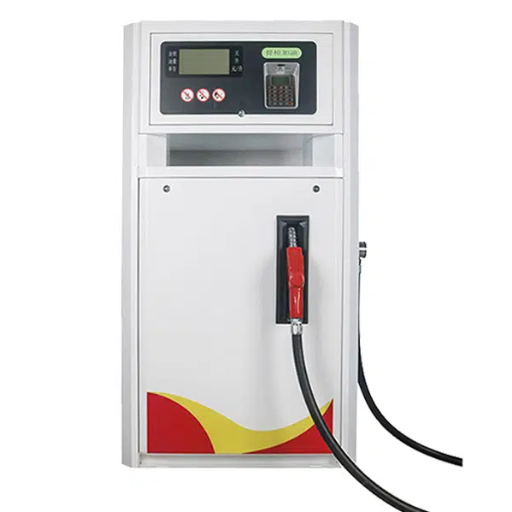
Proper maintenance ensures the longevity and best working condition of a fuel dispenser. Regular inspection schedules must be followed, particularly for hoses, nozzles, filters, meters, and other critical components that are prone to wear and tear. Preventive maintenance includes cleaning components, tightening loose connections, issuing replacement parts, and rectifying any faults found in the installation that may lead to operational failure. Calibration monitoring is necessary to maintain the accuracy and validity of regulations.
Troubleshooting is designed for ordinary malfunctions, whether an inconsistency in fuel flow or irregular operations of the display caused by clogs, leakages, or faulty wiring. Diagnosis is the most effective method for detecting the real cause; therefore, use appropriate diagnostic equipment while complying with the safety measures and guidelines proposed by the manufacturer. Should a doubt arise for any step in repair and maintenance, it is preferable to seek professional advice to avoid damage to the equipment or shield due to the conversion.
Regular Maintenance for Longevity
Performing maintenance at regular intervals is generally considered a best practice for maximizing the longevity of machinery and ensuring optimal performance. The starting point in maintenance is to strictly follow the schedule prescribed by the manufacturer, which involves periodic inspection, cleaning, and replacement of parts. The equipment, concerning wear, could deteriorate: a seal may be failing, a fitting may be loose, or debris may be building up. Such minor problems, if left unattended, can become bigger issues; they are critical elements and, hence, should be kept lubricated to avoid friction and the resultant heat. Filters must also be replaced on schedule to prevent clogging from interfering with performance. Proper storage, including weather protection for the equipment, is equally essential to prevent corrosion or damage. If you take a proactive approach to maintenance and address minor issues as they arise, you stand a much better chance of extending the life of your equipment. Maintain safety first; refer to the manual for guidance during maintenance.
Common Issues and Solutions
| Common Issue | Possible Cause | Solution |
|---|---|---|
| Overheating | Poor ventilation, clogged air filters | Ensure proper ventilation, clean air filters |
| Unusual Noises | Loose or worn components | Inspect, tighten, or replace components |
| Reduced Performance | Clogs, inadequate lubrication | Clear blockages, lubricate moving parts |
| Power Issues | Unstable voltage supply | Verify adequate and stable power supply |
Standard equipment issues, in my experience, typically occur due to overheating, unusual noises, or reduced performance. First, to obtain overheating protection, create proper ventilation and clear the air filters of debris. Next, if strange noises are observed, inspect for any loose or worn-out components and tighten or replace them accordingly. Now, if there is a case of diminished performance, then the first step is to have an inspection for any clogs. Afterward, ensure that all moving parts are adequately lubricated. Lastly, verify that an adequate and stable voltage is being supplied to the power supply. Always refer to the instruction manual or contact a technician if the problem persists. In other words, regular maintenance and periodic observation can help avoid these challenges.
When to Replace Fuel Dispenser Parts
Immediate Replacement Indicators:
- Visible cracks or corrosion
- Signs of leakage
- Irregular dispensing rates
- Inaccurate measurements
- Prolonged downtimes for repairs
The most immediate replacement should be done to ensure efficiency and safety in fuel dispensing equipment. Any component exhibiting deterioration, such as cracks or signs of corrosion or leakage, must be replaced immediately due to either operational failure or potential safety hazards. Additionally, elements such as hoses, nozzles, filters, and seals should be replaced regularly, depending on the frequency of use and in accordance with the manufacturer’s recommendations, which typically range from one to three years. If you notice irregular dispensing rates, inaccurate measurements, or prolonged downtimes for repairs, these are classic warning signs that critical components need to be replaced. Use only certified parts suited to the particular model of your dispenser to function best and also to prevent damage to your system.
Reference Sources
“Consumer Protection Related to Dispensing Pump Manipulation in SPBU (Gas Station)”
Frequently Asked Questions (FAQs)
What are the main parts of the fuel dispenser used in gas stations?
The primary components of a fuel dispenser typically include the fuel pump, nozzle, flow meter, and various valves. These components work together to ensure the safe operation and accurate delivery of fuel to vehicles, whether it be gasoline, diesel, or other petroleum products.
How does a fuel dispenser flow meter operate?
A fuel dispenser flow meter measures the volume of fuel being dispensed, providing crucial data for billing and inventory management. It operates by using a pulse mechanism that counts the amount of fuel flowing through it, ensuring accurate billing either per gallon or liter.
What are the benefits of using durable fuel dispenser parts?
Durable fuel dispenser parts enhance the reliability and longevity of the equipment, reducing the need for frequent replacements. They ensure that the fuel dispenser can withstand harsh operating conditions, making them suitable for a wide range of applications, including high-traffic gas stations and oil depots.
What safety features are included in explosion-proof fuel dispensers?
Explosion-proof fuel dispensers are designed with safety in mind. They often include features such as an explosion-proof motor, self-sealing nozzles, and protective housing to prevent ignitions in hazardous environments, ensuring safe operation around flammable fuels like gasoline and kerosene.
How can fuel dispenser accessories improve functionality?
Fuel dispenser accessories, including filters and hoses, play a crucial role in maintaining the dispenser’s efficiency. They help filter out impurities and ensure a smooth flow of fuel, enhancing the overall performance and safety of fuel delivery systems.
What is the function of a fuel dispenser valve?
The valve in a fuel dispenser controls the flow of fuel. It opens to allow fuel to flow from the storage tank to the vehicle’s fuel tank. It closes automatically when the dispensing is complete or when the container is full, preventing spillage and ensuring accurate fuel volume delivery.
Why is a display screen important in fuel dispensers?
A display screen on a fuel dispenser provides vital information to both the operator and the customer, such as the volume of oil dispensed, the price per gallon or liter, and the total amount due. This feature enhances user experience and contributes to accurate billing during fuel transactions.
What role does a keyboard play in a fuel dispenser?
A keyboard in a fuel dispenser enables users to input specific commands for preset fuel amounts or to access various functions. This feature is handy in multi-product dispensers where customers may need to select the type of fuel they wish to dispense.
How does a fuel dispenser ensure accurate billing?
Accurate billing in fuel dispensers is ensured through the integration of flow meters and advanced technology that tracks the fuel being dispensed. This information is processed and displayed on the screen, allowing for precise calculations based on the volume of fuel delivered to the vehicle.

